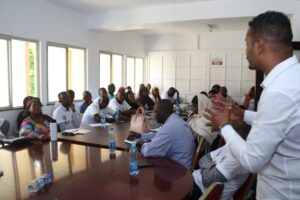The Improvised Explosive Device -IED

Col. (Rtd) J. M. Owuoth.
What is the background story?
Three people have been confirmed dead and 10 others injured after a bus they were travelling in
hit an Improvised Explosive Device (IED) in Kenya’s Northern County, bordering Somalia.
According to pictures taken at the scene shared on social media, the force of the explosion ripped
off the roof of the bus. No group has claimed responsibility for the attack, but suspicion has
fallen on Al-Shabaab, Somalia’s jihadist rebels allied to Al-Qaida and who have earlier owned
up carrying out such attacks in Kenya.
So what is an IED?
An IED is any bomb that is not produced by specialized firms or armament manufacture, but is
assembled from materials at hand. It has become a weapon of choice by terrorist groups and
armies of the night.
All kinds of methods exist to create explosions of one sort or another, all of which could be
described as ‘IEDs’. The trial and error method used in making them render them unpredictable
but still very deadly.
Why are they referred to as Improvised?
The key word is ‘improvised’. They all work differently because they were all designed differently. Their initiation systems might be electrical, mechanical, chemical, pyrotechnic or a
combination of all these. They are actuated by any number of means ranging from physical
means, radio, remote or by electric connection.
Improvised is used to distinguish it from a device constructed by an actual armament
manufacture with some manner of default settings.
Improvised devices are harder to stop as they are made in many locations by many different
people which also affect the disarming techniques. With an improvised device, you have less
information. Each one may be unique – while some techniques are more popular, each designer
makes changes that can affect how they operate.
What is the history of IED?
2
IEDs were distinctly involved for years since the First World War but got the added frequency of
use early in the century, partly due to the Ottawa treaty.
What is the Ottawa treaty?
The Ottawa Treaty is the formal title used for the Convention on the Prohibition of the Use,
Stockpiling, Production and Transfer of Anti-Personnel Mines and on their Destruction. It was
aimed to eliminate anti-personnel landmines around the world with 164 state parties to the treaty
signed in 1997. With countries not commercially involved in manufacturing these weaponry,
improvisation came into play and hence the increases in IEDs. The global war on terror and the
end of the cold war also hastened the process.

Why are IEDs commonly used by terrorists?
Terrorists are in a way, desperate and desperate people do desperate things. Five reasons stand
out why IEDS are popular with terrorists:
It requires relatively small investment in chemicals, maybe some fertilizers, some oil, and
some detonators to make it.
It is relatively easy to assemble; the internet also offers invaluable guidelines on this if
you know where to look for.
It is easily transported and can be concealed in any bag, case, luggage, vehicles even
planes. Some can even be concealed within the body crevices. Remember the Underwear
bomber?
It is also relatively easy to plant as it looks like common objects. And generally it leaves
very little evidence is after the blast making it difficult to trace and follow.
It is also known to devastating having long lasting impression on the mind of victims
which translates to good publicity.
What is the most effective defense against IED?
Ideally, not being there is the only best defense. Otherwise, hope you’re in a vehicle strong
enough to protect you from the blast and flying debris. Detection also curtails its effectiveness as
3
once detected it can be disarmed. Having a road tarmacked could have prevented the fatal
incident in Mandera as the IEDS are normally planted under the soil to explode once run over by
a vehicle.
What are the final thoughts?
Regrettably, the IED is here to stay as an asymmetric weapon and is bound to be used as a
weapon of choice by the terror groups.




